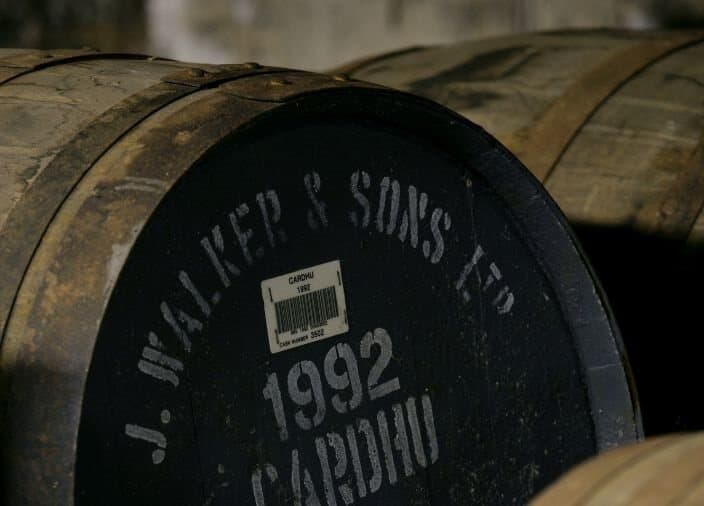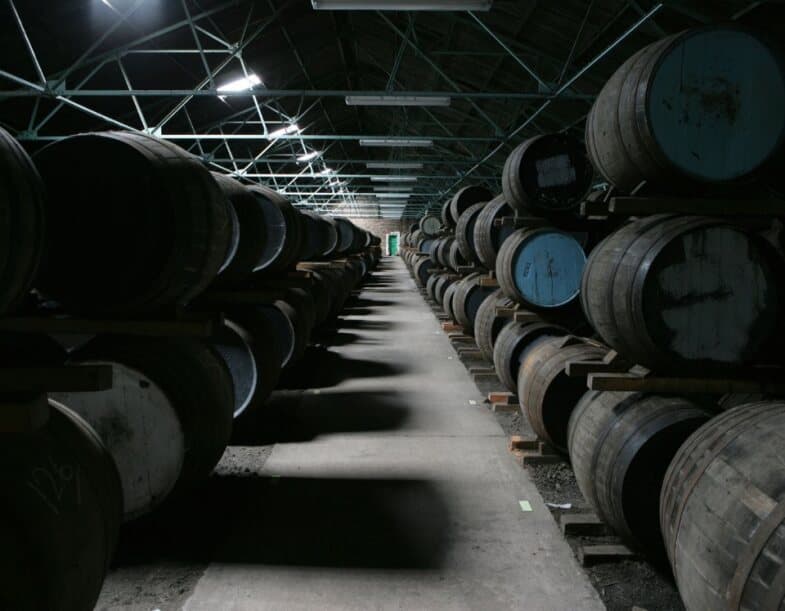Blogs & Inspiration
Scotch Whisky Regions: Speyside & Lowlands
Explore the history and role these two important Scottish regions have in producing Johnnie Walker whisky.
Author: Tom Jones, Whisky Specialist
Estimated reading time: 5 minutes

Scottish Whisky Regions
Quality Scotch whisky draws from the entire country of Scotland, with Johnnie Walker using distilleries from the four corners of the country to create their blends.
Discover the role Speyside and the Lowlands play in shaping the iconic Johnnie Walker flavour.
Join Tom Jones, certified whisky specialist, to learn how distilleries in Glenkinchie create a more dense and fragrant malt whisky and unravel the murky history of Cardhu of Speyside, responsible for the fruity profile found in Johnnie Walker Black Label, perfect for a Creamy Johnnie Highball.
The Lowlands
Separated from England by the remains of Hadrian's Wall, the lowlands are the most southern area of Scotland, containing two critical Scottish cities, Glasgow and Edinburgh.
The lowlands were once littered with many distilleries, but now only the finest few remain, with Glenkinchie considered the region's gem.
The distillery is set within luscious farmland beside the Kinche Burn (river) and is identifiable by its red brick buildings and some of the largest whisky stills in mainland Scotland.
These large stills cut down copper contact, creating a denser spirit that becomes a fragrant single-malt whisky after maturation.
The whisky from Glenkinchie adds the light and fresh top notes you'll find in Johnnie Walker Black Label, building a moderate texture to the drink's mouthfeel.
These notes are best demonstrated through a highball, as they allow bartenders to showcase the layers of flavour and draw out the fruity tangs with supplementary ingredients.
Speyside
Speyside is the region around the river Spey in the Northeast of Scotland and is famous for its fertile soil and scenic views.
It's far more populated with distilleries than the lowlands, making it a paradise for whisky lovers, with Cardhu being the brightest star in the area.
The Cardhu distillery has been operating on a farm in Speyside since 1811, running illegally for its first 12 years before deciding to operate within the law.
Started by Helen Cumming, considered one of the first-ever female distillers, in the early years, she would hoist a red flag or red rug on her washing line to warn of government agents called Gaugers.
Helen became renowned for avoiding the law and evading tax, but she was most famous for the quality of the whisky she produced.
Rich and filled with vibrant flavours, Cardhu was eventually bought by the Walker family and is still revered for its delicate, fruity profile. There's an intense grassy character, supplemented by orange and chocolate notes that are brought upon by slow distillation.
This flavour profile makes it a fine part of Johnnie Walker Black Label and knowing this flavour profile can help you create sweet highballs that use more earthy ingredients.
Key Takeaways
- Different Scottish regions, like the Lowlands and Speyside, play a key part in the production of Johnnie Walker whisky.
- Distilleries like Cardhu and Glenkinchie play a massive role in flavour of Johnnie Walker Black Label.
- The fruity and more dense whisky created in the Lowlands and Speyside are best served in a highball serve.
- Understanding the history and production of Johnnie Walker can make you a better bartender.
Sign up for free and become a member of Diageo Bar Academy today to unlock the latest industry news, trends, and tips to keep your bar knowledge up to speed!
